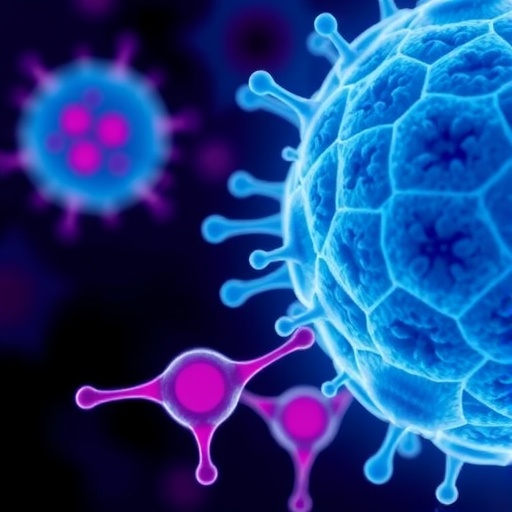The International Society for Stem Cell Research (ISSCR) has unveiled an innovative and comprehensive resource entitled Best Practices for the Development of Pluripotent Stem Cell-Derived Cellular Therapies, marking a pivotal advancement in the domain of regenerative medicine. This dynamic, interactive guide is meticulously designed to expedite the translation of human pluripotent stem cell (PSC)-derived therapies from the research bench to clinical trials and eventual commercial availability. By synthesizing the expertise of global leaders in the field, the ISSCR aims to address the multifaceted challenges inherent in developing PSC-based cellular treatments.
Central to the document is an in-depth framework that navigates developers through critical decision-making junctures essential for ensuring the safety, efficacy, and regulatory compliance of PSC-derived products. Covering seven meticulously organized sections, the guidance spans the breadth of translational development, including PSC line selection, sourcing and qualification of raw materials, preclinical validations, manufacturing standards, and clinical trial design. Importantly, the resource is jurisdictionally neutral, allowing it to serve as a universally applicable blueprint adaptable across international regulatory landscapes.
The formulation of this resource reflects an unprecedented collaborative effort within the stem cell scientific community. Hideyuki Okano, President of the ISSCR, emphasizes the importance of shared leadership in driving impactful progress: this blueprint embodies a strategic vision to harmonize best practices globally while maintaining flexibility for continuous updates as the field rapidly evolves. This approach addresses a significant void by providing clarity on translational pathways that can often be convoluted due to diverse regulatory interpretations and technical intricacies.
At the heart of the implementation challenges faced by many promising PSC-derived therapies is the absence of consolidated guidance that bridges laboratory innovation and industrial-scale clinical applications. Jacqueline Barry, co-chair of the Best Practices Steering Committee, articulates that the document distills complex translational knowledge into actionable strategies—thus mitigating delays, reducing developmental expenditures, and increasing the likelihood of clinical and market success. The guide therefore plays a vital role in catalyzing the transition from proof-of-concept stages to first-in-human trials effectively.
Technical rigor is underscored throughout the resource, highlighting critical parameters such as the selection of PSC starting material which directly impacts differentiation potential, phenotypic stability, and safety profiles. The document stresses the importance of ancillary materials used during cell expansion and differentiation, advocating for stringent quality control measures to minimize variability and contamination risks. By integrating regulatory considerations across nine jurisdictions including the USA, EU, Japan, China, and others, the guide provides comprehensive insights into the nuances of international compliance essential for global product development.
Another significant contribution of this resource is its emphasis on drug product manufacturing and cell banking under Good Manufacturing Practice (GMP) standards — a cornerstone for ensuring reproducibility and clinical-grade quality. The guide maps out strategic processes encompassing cell line characterization, cryopreservation protocols, potency assays, and scaling methodologies adapted for commercial readiness. Such technical aspects address existing gaps and align various stakeholders around a shared operational framework.
Preclinical evaluation, a fundamental prerequisite for clinical progression, receives thorough attention by outlining optimized protocols tailored for PSC-derived products which inherently pose unique challenges relative to traditional biologics or small molecules. Recommended approaches include in vitro functional assays, safety pharmacology, tumorigenicity assessments, and in vivo efficacy models, thereby reinforcing the necessity for a robust safety profile prior to human application.
The document’s interactive design furthers its utility by presenting complex information visually and embedding direct links to regulatory bodies and key resources. This innovative format supports real-time navigation by researchers and developers seeking immediate clarity on evolving regulatory landscapes, thereby fostering informed decision-making throughout developmental pipelines. Updated annually to incorporate advances in the science and policy spheres, the resource is positioned to remain a living document adaptive to future innovations.
Importantly, the ISSCR resource serves a multi-disciplinary audience encompassing academic investigators, biotech enterprises, regulatory authorities, and industry partners. Its inclusive approach encourages cross-sector dialogue and facilitates harmonization, essential for overcoming bottlenecks that often fragment cellular therapy development. This aligns with the ISSCR’s broader mission of promoting excellence in stem cell science and accelerating translation to human health.
The broad international regulatory scope is a unique hallmark of this guide, covering critical aspects such as clinical trial timelines, manufacturing licenses, and jurisdiction-specific operational requirements within nine countries and regions. This comprehensive mapping addresses a substantial need for consolidated, practical insight that supports global-scale planning and risk mitigation in cellular therapy endeavors.
ISSCR co-chair Kapil Bharti highlights the aspirational impact of this best practices guide — envisaging an ecosystem where stem cell therapies can reach patients more rapidly and safely worldwide. By raising the rigour and standardization of translational processes, the initiative promises to expand the clinical application landscape and enhance patient access to revolutionary regenerative treatments.
This authoritative compendium is therefore not only a technical manual but also a strategic catalyst designed to shape the future of pluripotent stem cell therapeutics. It embodies the convergence of scientific innovation, regulatory strategy, and clinical ambition, poised to transform regenerative medicine into a reliably translatable and scalable reality.
For those interested in advancing stem cell-based therapy development, the ISSCR’s Best Practices for the Development of Pluripotent Stem Cell-Derived Cellular Therapies is now available for download, providing an invaluable roadmap to guide the next generation of cellular medicine.
Subject of Research: Development and translational standards for pluripotent stem cell-derived cellular therapies
Article Title: Best Practices for the Development of Pluripotent Stem Cell-Derived Cellular Therapies
Web References:
https://www.isscr.org/translational-best-practices
Image Credits: ISSCR
Keywords: Cell therapies, Stem cell therapy, Drug therapy, Health care, Pharmaceuticals, Stem cell research, Applied research, Translational research, Clinical research
Tags: challenges in cellular therapy developmentclinical trial design for stem cellscollaborative efforts in stem cell researchinternational stem cell regulationsISSCR best practices guidemanufacturing standards for PSC productspluripotent stem cell therapiespreclinical validation of stem cell therapiesPSC-derived cellular therapiesregenerative medicine advancementssafety and efficacy in stem cell treatmentstranslation of stem cell research to clinical applications





